A Study of the Effects of Rain, Snow and Hail on the Atmospheric Electric Field near Ground
Abstract
:1. Introduction
2. Materials and Methods
3. Results and Discussion
3.1. Rain Events
3.2. Hail Events
3.3. Snow Events
3.4. Frequency Distributions of PG during Rain, Hail and Snow
4. Conclusions
Author Contributions
Funding
Institutional Review Board Statement
Informed Consent Statement
Data Availability Statement
Acknowledgments
Conflicts of Interest
References
- Harrison, R.G.; Nicoll, K.A. Fair weather criteria for atmospheric electricity measurements. J. Atmos. Sol. Terr. Phys. 2018, 179, 239–250. [Google Scholar] [CrossRef]
- Endoh, T.; Iwabuchi, T.; Magono, C. Observation of the Electric Potential Gradient at the Surface in winter Fogs. J. Meteorol. Soc. Jpn. Ser. II 1972, 50, 389–400. [Google Scholar] [CrossRef] [Green Version]
- Nizamuddin, S.; Ramanadham, R. The electric potential gradient in mist, haze, and fog. Pure Appl. Geophys. PAGEOPH 1983, 121, 353–359. [Google Scholar] [CrossRef]
- Bennett, A.J.; Harrison, R.G. Atmospheric electricity in different weather conditions. Weather 2007, 62, 277–283. [Google Scholar] [CrossRef]
- Chree, C. Atmospheric Electricity and Rain. Nature 1910, 85, 80–81. [Google Scholar] [CrossRef]
- Simpson, G.C. Atmospheric electricity during disturbed weather. J. Geophys. Res. 1948, 53, 27. [Google Scholar] [CrossRef]
- Adkins, C.J. Measurements of the atmospheric potential gradient on a Canadian glacier. Q. J. R. Meteorol. Soc. 1959, 85, 60–64. [Google Scholar] [CrossRef]
- Reuveni, Y.; Yair, Y.; Price, C.; Steinitz, G. Ground level gamma-ray and electric field enhancements during disturbed weather: Combined signatures from convective clouds, lightning and rain. Atmos. Res. 2017, 196, 142–150. [Google Scholar] [CrossRef]
- Noto, H. Some studies on thunderstorms. Part IV. The relation between the sign of the potential gradient and that of the charge on rain and snowflakes. Jpn. J. Astron. Geophys. 1939, 17, 101–118. [Google Scholar]
- Magono, C.; Endow, T.; Shigeno, T. On the Electric Charge of Low Snow Clouds. In Proceedings of the Conference on Cloud Physics at Ft. Collins. In Proceedings of the Conference on Cloud Physics, Fort Collins, CO, USA, 24–26 August 1970; pp. 73–74. [Google Scholar]
- Kikuchi, K. Atmospheric Electrical Properties of Snow Clouds with Precipitation. J. Meteorol. Soc. Jpn. 1975, 53, 322–332. [Google Scholar] [CrossRef] [Green Version]
- Magono, C.; Orikasa, K. On the Disturbance of Surface Electric Field Caused by Snowfall. J. Meteorol. Soc. Jpn. Ser. II 1966, 44, 260–279. [Google Scholar] [CrossRef]
- Yair, Y.; Reuveni, Y.; Katz, S.; Price, C.; Yaniv, R. Strong electric fields observed during snow storms on Mt. Hermon, Israel. Atmos. Res. 2019, 215, 208–213. [Google Scholar] [CrossRef]
- Maeno, N.; Naruse, R.; Nishimura, K.; Takei, I.; Ebinuma, T.; Kobayabhi, S.; Nlshlmura, H.; Kaneda, Y.; Ishida, T. Wind-Tunnel Experiments on Blowing Snow. Ann. Glaciol. 1985, 6, 63–67. [Google Scholar] [CrossRef] [Green Version]
- Church, C.R. The Electrification of Hail. Doctoral Thesis, Durham University, Stockton Road, Durham, UK, DH1 3LE. 1966. [Google Scholar]
- Gardiner, B.; Lamb, D.; Pitter, R.L.; Hallett, J.; Saunders, C.P.R. Measurements of initial potential gradient and particle charges in a Montana summer thunderstorm. J. Geophys. Res. Atmos. 1985, 90, 6079–6086. [Google Scholar] [CrossRef]
- MacGorman, R.D.; Rust, W.D. The Electrical Nature of Storms; Oxford University Press: New York, NY, USA, 1998. [Google Scholar]
- Defer, E.; Pinty, J.-P.; Coquillat, S.; Martin, J.-M.; Prieur, S.; Soula, S.; Richard, E.; Rison, W.; Krehbiel, P.; Thomas, R.; et al. An overview of the lightning and atmospheric electricity observations collected in southern France during the HYdrological cycle in Mediterranean EXperiment (HyMeX), Special Observation Period 1. Atmos. Meas. Tech. 2015, 8, 649–669. [Google Scholar] [CrossRef] [Green Version]
- Takagi, M.; Iwata, A. A seasonal effect in diurnal variation of the atmospheric electric field on the Pacific coast of Japan. Pure Appl. Geophys. PAGEOPH 1980, 118, 953–963. [Google Scholar] [CrossRef]
- Rakov, V.A.; Uman, M.A. Lightning-Physics and Effects; Cambridge University Press: Cambridge, UK, 2006. [Google Scholar]
- Kastelis, N.; Kourtidis, K. Characteristics of the atmospheric electric field and correlation with CO2 at a rural site in southern Balkans. Earth Planets Space 2016, 68, 3. [Google Scholar] [CrossRef] [Green Version]
- Nicoll, K.A.; Harrison, R.G.; Barta, V.; Bor, J.; Brugge, R.; Chillingarian, A.; Chum, J.; Georgoulias, A.K.; Guha, A.; Kourtidis, K.; et al. A global atmospheric electricity monitoring network for climate and geophysical research. J. Atmos. Solar Terr. Phys. 2019, 184, 18–29. [Google Scholar] [CrossRef]
- Harrison, R.G. Fair weather atmospheric electricity. J. Phys. Conf. Ser. 2011, 301, 012001. [Google Scholar] [CrossRef]
- Moore, C.B.; Vonnegut, B. The thundercloud. In Lightning; Golde, R.H., Ed.; Academiq San Diego: San Diego, CA, USA, 1977; Volume 1. [Google Scholar]
- Couto, F.T.; Iakunin, M.; Salgado, R.; Pinto, P.; Viegas, T.; Pinty, J.-P. Lightning modelling for the research of forest fire ignition in Portugal. Atmos. Res. 2020, 242, 104993. [Google Scholar] [CrossRef]
- Met Office. Pioneers: British Antarctic Expedition 1910–1913. Available online: https://www.metoffice.gov.uk/binaries/content/assets/metofficegovuk/pdf/research/library-and-archive/library/publications/factsheets/pioneers_scott-bae-1910_1913.pdf (accessed on 2 June 2021).
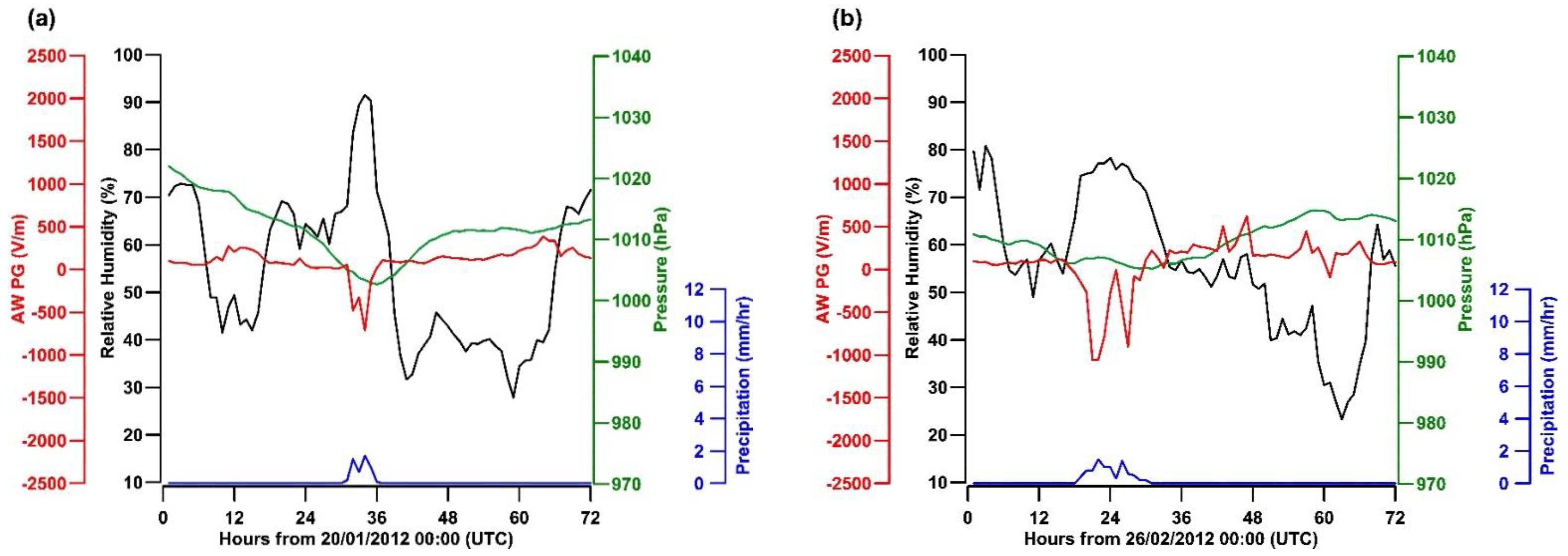
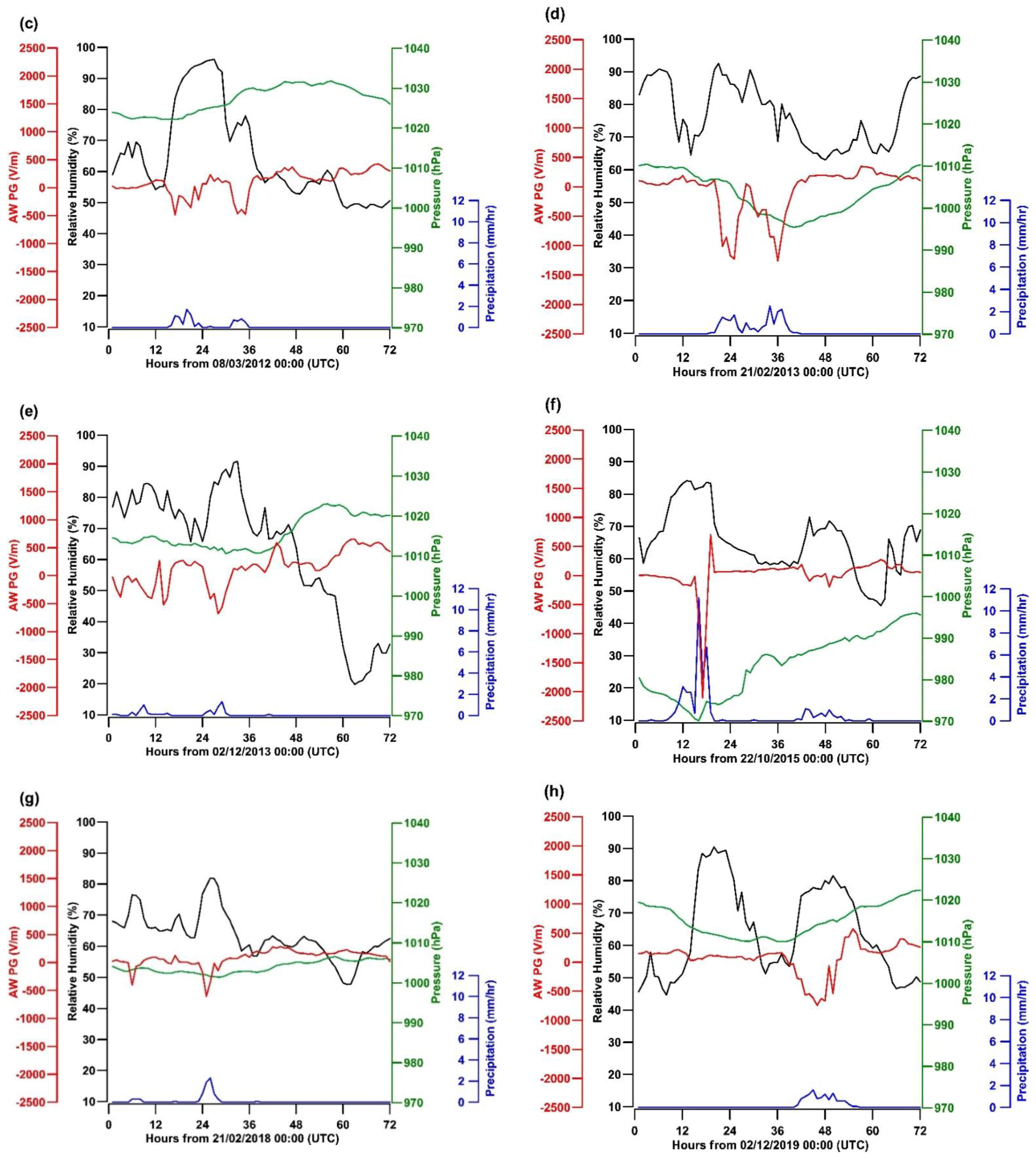
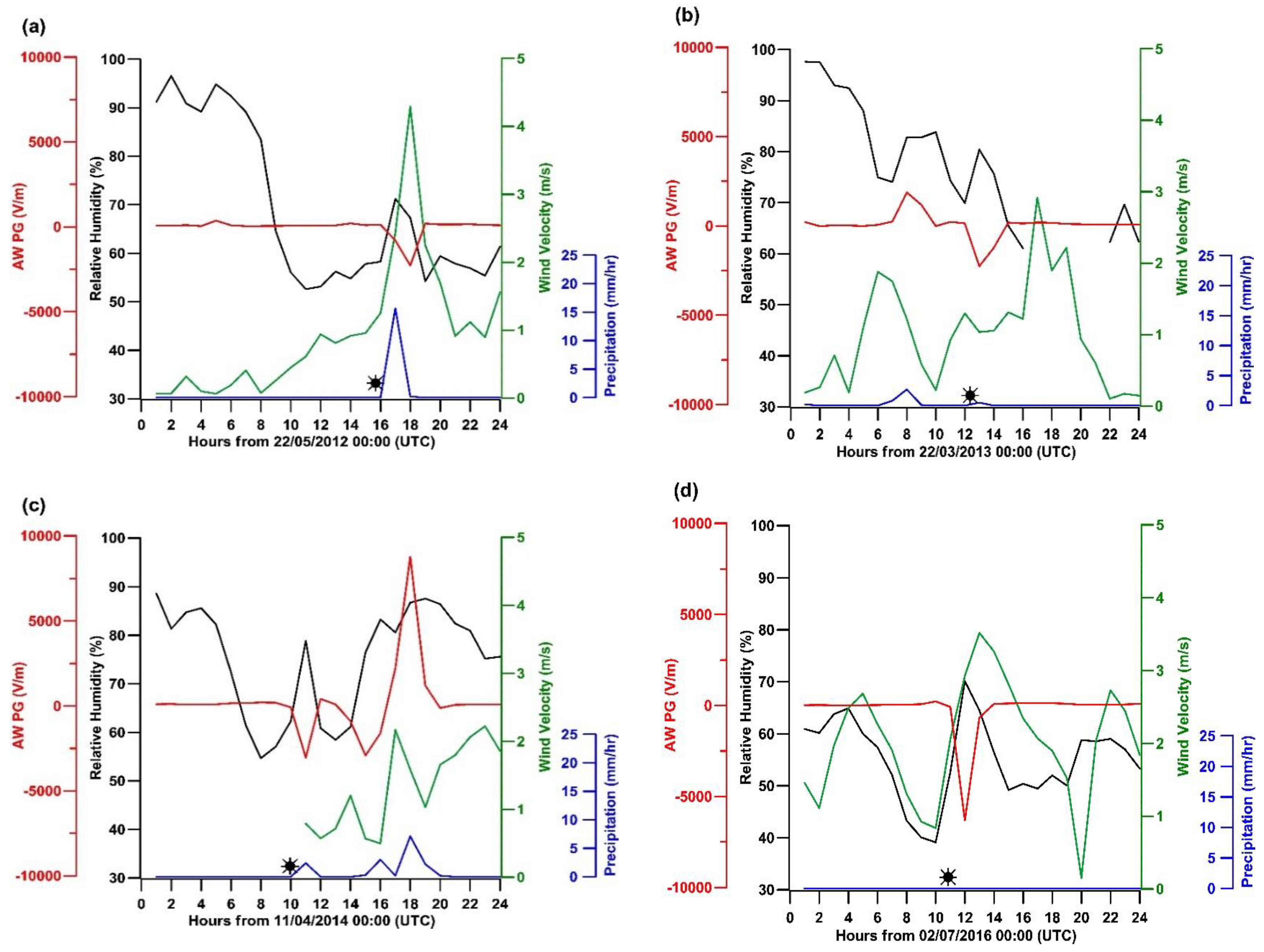
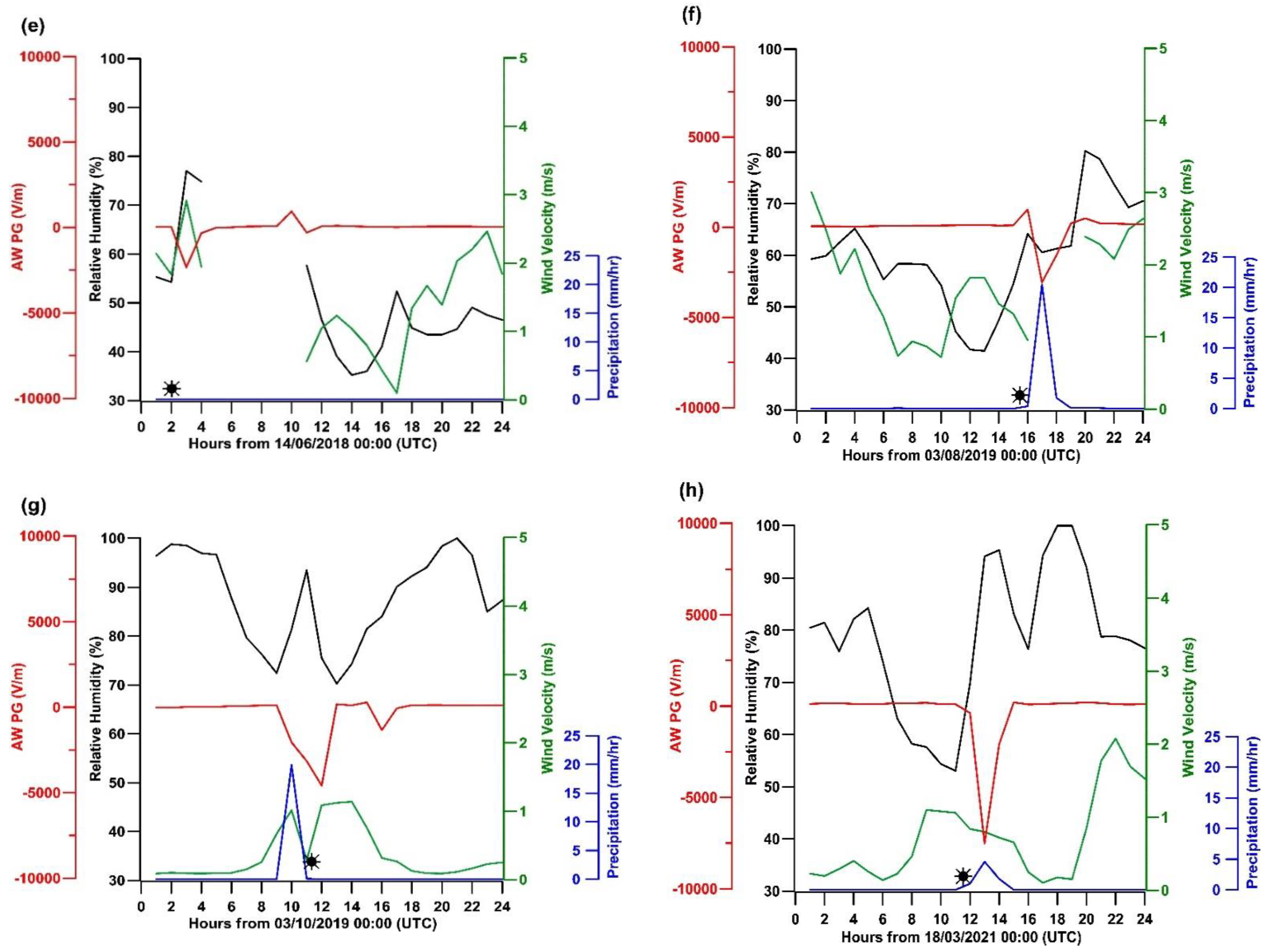
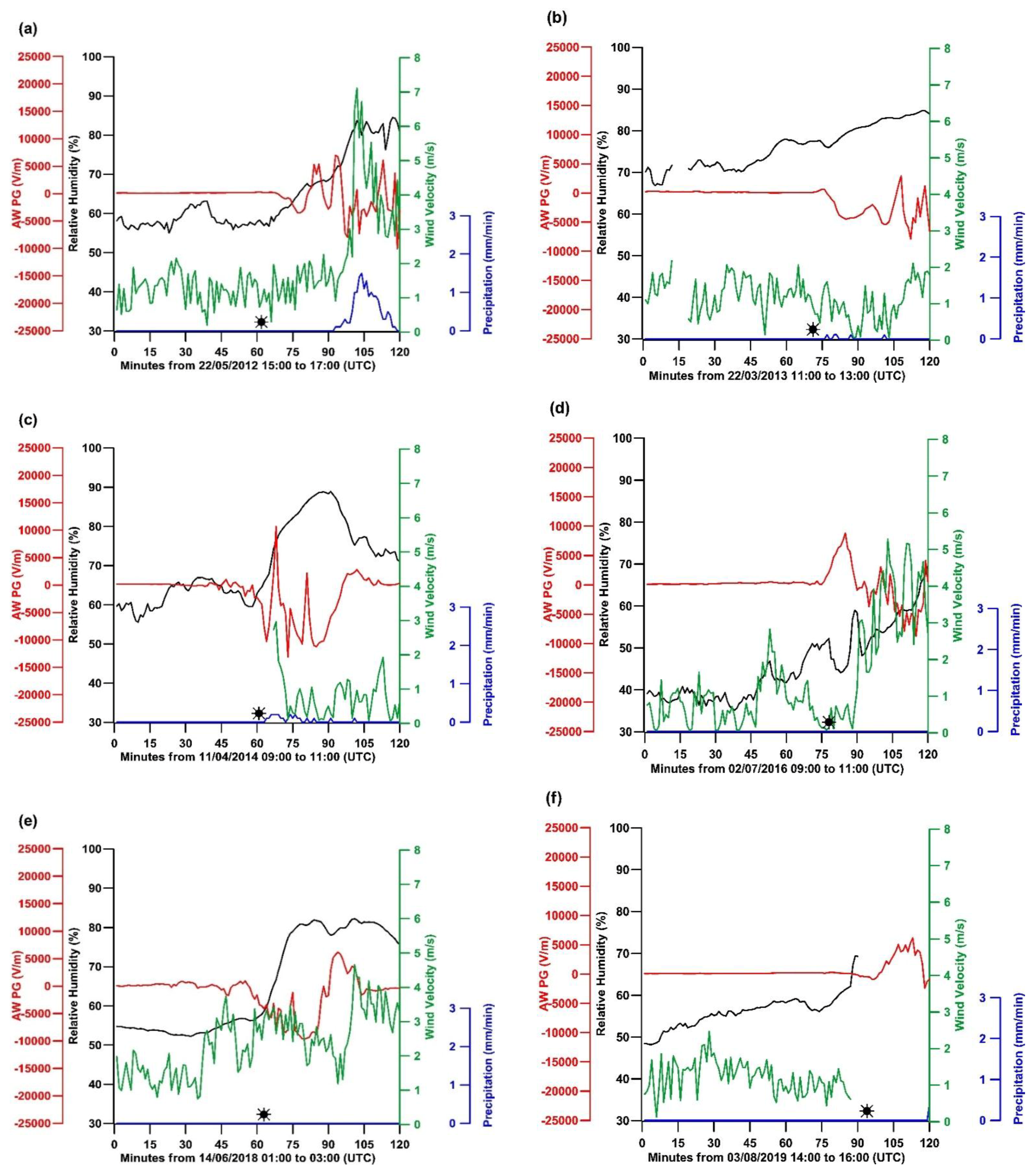
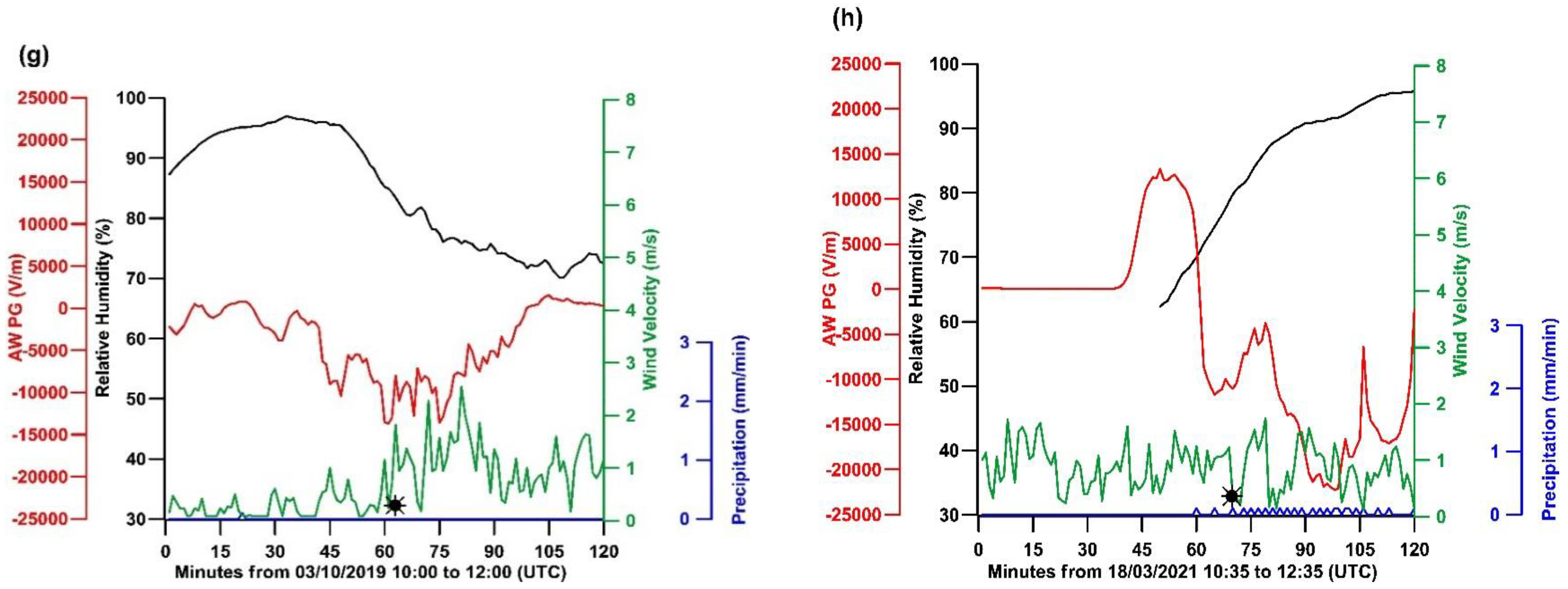


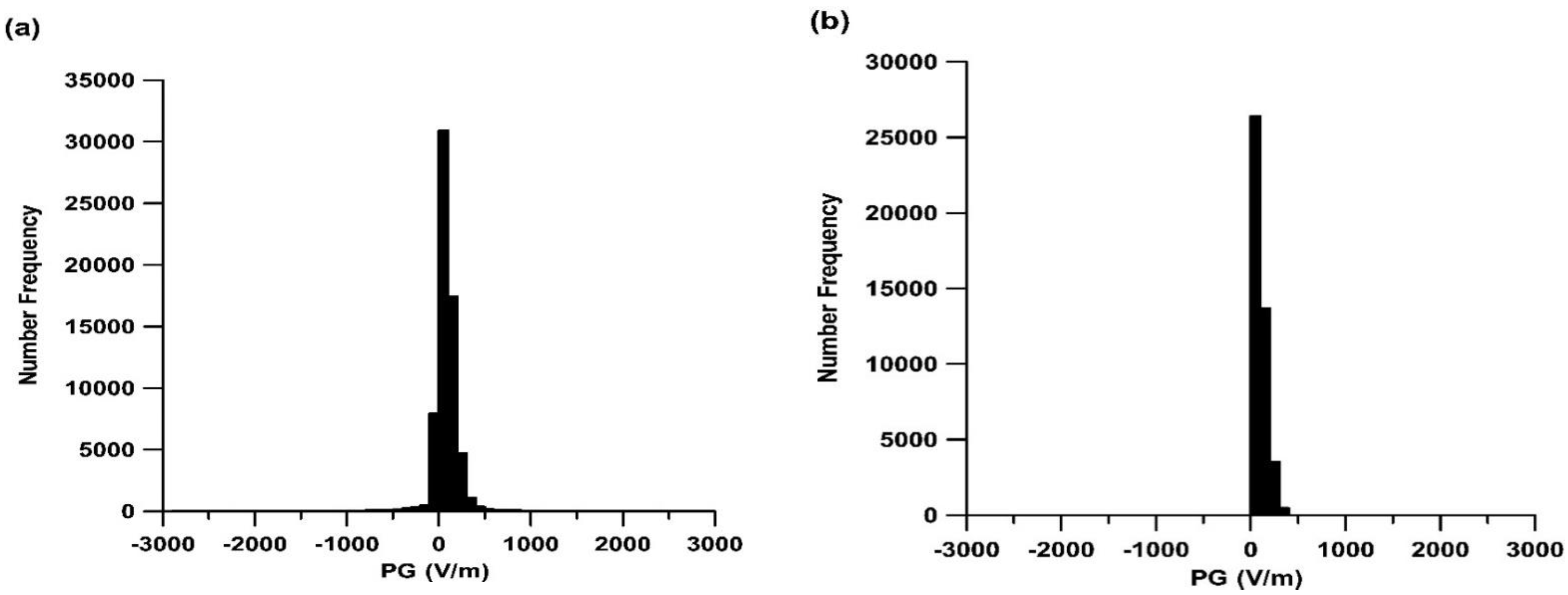

Publisher’s Note: MDPI stays neutral with regard to jurisdictional claims in published maps and institutional affiliations. |
© 2021 by the authors. Licensee MDPI, Basel, Switzerland. This article is an open access article distributed under the terms and conditions of the Creative Commons Attribution (CC BY) license (https://creativecommons.org/licenses/by/4.0/).
Share and Cite
Karagioras, A.; Kourtidis, K. A Study of the Effects of Rain, Snow and Hail on the Atmospheric Electric Field near Ground. Atmosphere 2021, 12, 996. https://doi.org/10.3390/atmos12080996
Karagioras A, Kourtidis K. A Study of the Effects of Rain, Snow and Hail on the Atmospheric Electric Field near Ground. Atmosphere. 2021; 12(8):996. https://doi.org/10.3390/atmos12080996
Chicago/Turabian StyleKaragioras, Athanasios, and Konstantinos Kourtidis. 2021. "A Study of the Effects of Rain, Snow and Hail on the Atmospheric Electric Field near Ground" Atmosphere 12, no. 8: 996. https://doi.org/10.3390/atmos12080996






